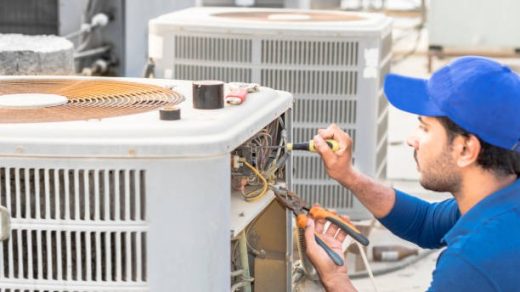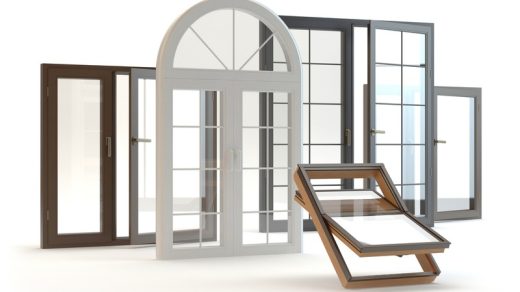What Are the Common Signs of Mold Growth After Water Damage?
Water damage is a homeowner’s nightmare, and its repercussions often extend beyond the immediate visible effects. Among these hidden consequences, mold growth looms as a potential threat. When water infiltrates a property, it creates the ideal environment for mold to thrive. Mold poses health risks and can wreak havoc on a property’s structure and aesthetics. This article will explore the common signs of mold growth after water damage, helping homeowners recognize and address this insidious issue before it becomes a major problem.
What Is Water Damage?
Water damage refers to any adverse changes occurring when water infiltrates a residential or commercial structure. This water infiltration can result from various sources, including leaks, floods, burst pipes, storms, or excessive humidity. Water damage can manifest in different classes and categories, which are used to assess the severity of the damage. It is imperative to understand that water damage is not limited to immediate structural damage but can lead to long-term consequences if not properly addressed.
If you’re a property owner in Honolulu, HI, consider the potential water damage risks. A property with significant water damage can see a dip in market value, as potential buyers perceive it as a high-risk investment. Furthermore, damage restoration costs can increase quickly, leading to financial strain.
Why Is It Linked to Mold Growth?
The connection between water damage and mold growth is rooted in the conditions necessary for mold to flourish. Mold is a fungus that thrives in moist environments and can feed on organic materials like wood, drywall, and insulation. When water infiltrates a property, it provides the moisture mold needs to grow and reproduce.
Additionally, the cellulose-based building materials commonly found in homes serve as a food source for mold. Consequently, water damage sets the stage for mold infestation, making it a frequent and problematic consequence of water-related incidents.
It’s wise not to adopt a DIY approach when remediating water damage. Professional flood and water restoration services can investigate the severity of the problem, strategize the most fitting solution, and efficiently restore your property. These experts employ state-of-the-art equipment and techniques to restore the integrity of your property and prevent further damage.
What Are the Signs of Mold Growth After Water Damage?
1. Visible Mold Growth
The most obvious sign of mold growth is the presence of visible mold. It often appears as dark spots or patches on walls, ceilings, or floors. Depending on the species and the materials it grows, mold can take on various colors, including green, black, brown, or gray. If you notice any suspicious growth, it must be inspected promptly.
2. Musty Odor
Mold produces a distinct, musty odor. Even if you don’t see visible mold, a persistent musty smell in a specific area of your home may indicate hidden mold growth. This odor is often a strong indicator that mold is present and should not be ignored.
3. Water Stains
Water stains on ceilings, walls, or floors can indicate past or ongoing water damage. These stains often appear as discolored patches, and while they might not always be accompanied by mold growth, they signal a potential moisture problem that could lead to mold infestation.
4. Peeling or Bubbling Paint and Wallpaper
Moisture from water damage can cause paint and wallpaper to peel or bubble. When these coverings start to detach from the underlying surface, it may be due to moisture trapped beneath, providing an ideal environment for mold growth.
5. Deterioration of Building Materials
Mold can weaken and deteriorate building materials over time. For example, drywall may become soft or crumble when mold is present, and wooden structures can rot or warp. If structural materials show signs of decay, mold may be the culprit.
6. Allergic Reactions and Health Symptoms
Mold spores can become airborne and be inhaled, leading to allergic reactions and health issues. If occupants of a property experience symptoms such as nasal congestion, sneezing, coughing, throat irritation, or skin rashes, it may be due to mold exposure. Persistent health issues should prompt investigation for mold.
7. Increased Humidity
High humidity levels within a property can promote mold growth. If you observe consistently elevated humidity levels, particularly in areas prone to water damage like basements or bathrooms, it’s important to address the humidity issue to prevent mold from thriving.
8. Previous Water Incidents
If your property has experienced water damage from flooding, leaks, or burst pipes, it becomes more susceptible to mold growth. Mold can establish itself in hidden areas that may not have been properly dried and remediated after the initial water damage event.
Finding reliable mold removal services is crucial—professionals who comprehend the complex mold growth process can help eliminate the problem from the root rather than just dealing with superficial symptoms.
Understanding Mold Remediation
Post water damage, another severe issue property owners face is the onset of mold. Mold feeds off dampness, and a water-damaged property offers an ideal breeding ground. If not addressed promptly, mold can rapidly spread, causing health issues and structural damage.
Prevent Damage Before It Occurs
Proactive measures against water damage can save you hefty repair costs and help you maintain your property’s structural integrity and market value. Regular property checks, quick responses to leaks, and proper drainage systems can defend against unwanted damage. In conclusion, water damage impacts your property more than you may realize. Swift action, regular inspections, and professional help when necessary can extend the lifespan of your property and protect your investment.
Conclusion
Water damage and mold growth are closely linked, with water damage often creating the conditions for mold to flourish. Recognizing the common signs of mold growth after water damage is crucial for homeowners. Addressing mold promptly is essential, as it poses health risks and can cause significant structural and aesthetic damage to your property.
Suppose you suspect mold growth in your home. Consulting with professionals specializing in mold inspection and remediation is advisable to ensure a safe and effective resolution. By being vigilant and proactive, homeowners can protect their properties and the well-being of their families from the insidious threat of mold.





